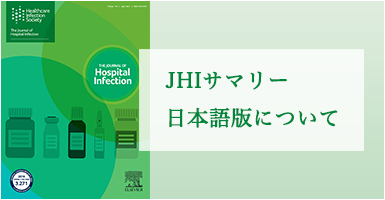疫学と計量経済学との会合:病床利用率が多剤耐性菌の拡散に及ぼす影響の観察のための時系列解析の使用
Epidemiology meets econometrics: using time-series analysis to observe the impact of bed occupancy rates on the spread of multidrug-resistant bacteria
K. Kaier*, E. Meyer, M. Dettenkofer, U. Frank
*University Medical Center Freiburg, Germany
Journal of Hospital Infection (2010) 76, 108-113
病床利用率、空床期間、および平均入院期間が教育病院における多剤耐性菌の拡散に及ぼす影響を明らかにするため、2つの多変量時系列解析を実施した。メチシリン耐性黄色ブドウ球菌(meticillin-resistant Staphylococcus aureus;MRSA)および基質特異性拡張型β-ラクタマーゼ(ESBL)産生菌の発生率に関する疫学的データを収集した。病床利用率、空床期間、および平均入院期間の時系列データを独立変数としてモデルに組み入れて、検定を行った。発生率の定義は、1,000患者日あたりの院内感染症例発生数とした。症例の定義は、入院から48時間以降にMRSAまたはESBL産生菌の感染・保菌を認めた全患者である。2003年1月から2008年7月のMRSAによる院内感染発生率の平均値は、1,000患者日あたり0.15件であった。2005年1月までは、ESBL産生菌は調査対象ではなかった。2005年1月から2008年7月のESBL産生菌による院内感染発生率の平均値も、1,000患者日あたり0.15件であった。2つの多変量モデルにより、一般病棟の病床利用率とMRSAおよびESBL産生菌による院内感染発生率との間には時間的関連が認められた。同様に、1か月ごとの集中治療室(ICU)への平均入室期間とMRSAおよびESBL産生菌による院内感染発生率との間にも時間的関連が認められた。一般病棟が過密状態であることおよびICUへの長期入室は、病院環境における多剤耐性菌の拡散に影響を及ぼす因子であることが明らかになった。
サマリー原文(英語)はこちら
監訳者コメント:
病床利用率が向上し、病棟が混雑してくると、接触予防策の必要な疾患の患者に対して個室に収容するなどの必要な感染対策がとれなくなり、院内感染が増加する傾向にある。病院経営改善と院内感染の双方を考慮した病院運営の難しさを改めて感じさせられる論文である。
同カテゴリの記事
A clinical risk index for Clostridium difficile infection in hospitalised patients receiving broad-spectrum antibiotics
Do we need an ethical framework for hospital infection control?
Infection control measures for norovirus: a systematic review of outbreaks in semi-enclosed settings
Investigation of the first outbreak of OXA-48-producing Klebsiella pneumoniae in Ireland
How to carry out microbiological sampling of healthcare environment surfaces? A review of current evidence



